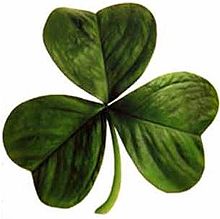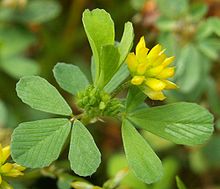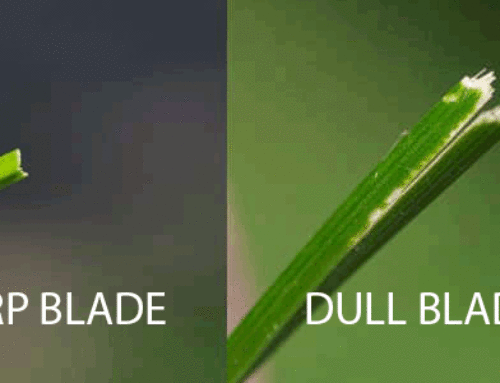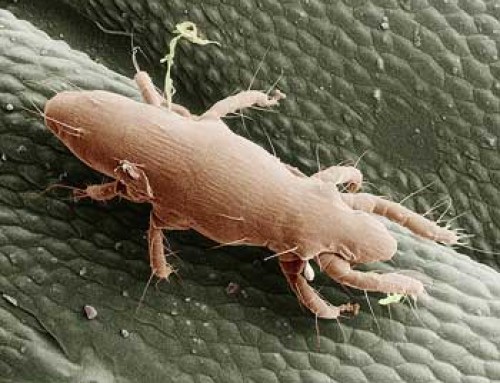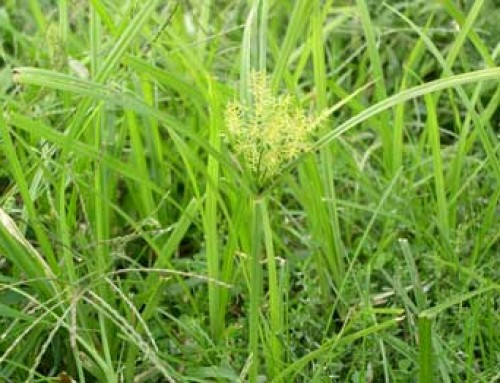All About the Shamrock
The Shamrock
A shamrock is a young sprig of clover, used as a symbol of Christianity in Ireland. Saint Patrick, Ireland’s patron saint, is said to have used it as a metaphor for the Christian Holy Trinity. Shamrock usually refers to either the species Trifolium dubium (lesser clover, Irish: seamair bhuí)[3] or Trifolium repens (white clover, Irish: seamair bhán). However, other three-leaved plants—such as Medicago lupulina,Trifolium pratense, and Oxalis acetosella—are sometimes called shamrocks or clovers. The shamrock was traditionally used for its medicinal properties and was a popular motif in Victorian times. [hide] There is still not a consensus over the precise botanical species of clover that is the “true” shamrock. John Gerard in his herbal of 1597 defined the shamrock as Trifolium pratense or Trifolium pratense flore albo, meaning Red or White Clover. He described the plant in English as ‘Three leaved grasse’ or ‘Medow Trefoile’, ‘which are called in Irish Shamrockes’.[4] The Irish botanist Caleb Threlkeld, writing in 1726 in his work entitled Synopsis Stirpium Hibernicarum or A Treatise on Native Irish Plants followed Gerard in identifying the shamrock as Trifolium pratense, calling it White Field Clover.[5] The botanist Karl Linnaeus in his 1737 work Flora Lapponica identifies the shamrock as Trifolium pratense, mentioning it by name in a Latinised form Chambroch, with the following curious remark: Hiberni suo Chambroch, quod est Trifolium pratense purpureum, aluntur, celeres & promtissimi roburis (The Irish call it shamrock, which is purple field clover, and which they eat to make them speedy and of nimble strength).[6][7] Linnaeus based his information that the Irish ate shamrock on the comments of English Elizabethan authors such as Edmund Spencer who remarked that the shamrock used to be eaten by the Irish, especially in times of hardship and famine. It has since been argued however, that the Elizabethans were confused by the similarity between the Irish (Gaelic) name for young clover seamróg, and the name for wood sorrel seamsóg.[8] The situation regarding the identity of the shamrock was further confused by a London botanist James Ebenezer Bicheno, who proclaimed in a dissertation in 1830 that the real shamrock was Oxalis acetosella or Wood Sorrel.[9] Bichino falsely claimed that clover was not a native Irish plant and had only been introduced into Ireland in the middle of the seventeenth century, and based his argument on the same comments by Elizabethan authors that shamrock had been eaten. Bicheno argued that this fitted the wood sorrel better than clover, as wood sorrel was often eaten as a green and used to flavour food. Bicheno’s argument has not been generally accepted however, as the weight of evidence favours a species of clover. A more scientific approach was taken by English botanists James Britten and Robert Holland, who stated in their Dictionary of English Plant Names published in 1878, that their investigations had revealed that Trifolium dubiumwas the species sold most frequently in Covent Garden as shamrock on St. Patrick’s Day, and that it was worn in at least 13 counties in Ireland.[10] Finally, detailed investigations to settle the matter were carried out in two separate botanical surveys in Ireland, one in 1893[11][12] and one in 1988.[13] The 1893 survey was carried out by Nathaniel Colgan, an amateur naturalist working as a clerk in Dublin; while the 1988 survey was carried out by E. Charles Nelson, Director of the Irish National Botanic Gardens. Both surveys involved asking people from all across Ireland to send in examples of shamrock, which were then potted up and allowed to flower, so that their botanical species could be identified. The results of both surveys were very similar, showing that the conception of the shamrock in Ireland had changed little in almost a hundred years. The results of the surveys are shown in the table below. Trifolium dubium flowers in Ireland from May to October[14] and so is not in flower on St. Patrick’s Day The results show that there is no one “true” species of shamrock, but that Trifolium dubium (Lesser clover) is considered to be the shamrock by roughly half of Irish people, and Trifolium repens (White clover) by another third, with the remainder split between Trifolium pratense, Medicago lupulina, Oxalis acetosella and various other species of Trifolium and Oxalis. None of the species in the survey are unique to Ireland, and all are common European species, so there is no botanical basis for the widespread belief that the shamrock is a unique species of plant that only grows in Ireland. The word shamrock derives from seamair óg or young clover, and references to semair or clover appear in early Irish literature, generally as a description of a flowering clovered plain. For example, in the series of medieval metrical poems about various Irish places called the Metrical Dindshenchus, a poem about Tailtiu or Teltown in Co. Meath describes it as a plain blossoming with flowering clover ( mag scothach scothshemrach).[15] Similarly, another story tells of how St. Brigid decided to stay in Co. Kildare when she saw the delightful plain covered in clover blossom (scoth-shemrach).[16] However, the literature in Irish makes no distinction between clover and shamrock, and it is only in English that shamrock emerges as a distinct word. Three “wild” Irish kerns by Albert Dürer 1521 The first mention of shamrock in the English language occurs in 1571 in the work of the English Elizabethan scholar Edmund Campion. In his work Boke of the Histories of Irelande, Campion describes the habits of the ‘wild Irish’ and states that the Irish ate shamrock “Shamrotes, watercresses, rootes, and other herbes they feed upon”.[17] The statement that the Irish ate shamrock was widely repeated in later works and seems to be a confusion with the Irish word seamsóg or wood sorrel (Oxalis).[8] There is no evidence from any Irish source that the Irish ate clover, but there is evidence that the Irish ate wood sorrel. For example, in the medieval Irish work Buile Shuibhne or ‘The Frenzy of Sweeney’, the king Sweeney who has gone mad and is living in the woods as a hermit, lists wood sorrel among the plants he feeds upon.[18] Writing soon after in 1596, was the English Elizabethan poet Edmund Spenser who described his observations of war-torn Munster after the Desmond Rebellion in his work A View of the Present State of Ireland. Here shamrock is described as a food eaten as a last resort by starving people desperate for any nourishment during a post-war famine: “Anatomies of death, they spake like ghosts, crying out of theire graves; they did eat of the carrions …. and if they found a plott of water cresses or shamrockes theyr they flocked as to a feast for the time, yett not able long to contynewe therewithall.” [19] The idea that the Irish ate shamrock is repeated in the writing of Fynes Moryson, one-time secretary to the Lord Deputy of Ireland. In his 1617 work An itinerary thorow Twelve Dominions Moryson describes the ‘wild Irish’, and in this case their supposed habit of eating shamrock is a result of their marginal hand-to-mouth existence as bandits. Moryson claims that the Irish: “willingly eat the herbe Schamrock being of a sharpe taste which as they run and are chased to and fro they snatch like beasts out of the ditches.” The reference to a sharp taste is suggestive of the bitter taste of wood sorrel.[20] What is clear is that by the end of the sixteenth century the shamrock had become known to English writers as a plant particularly associated with the Irish, but only with a confused notion that the shamrock was a plant eaten by them. To a herbalist like Gerard it is clear that the shamrock is clover, but other English writers do not appear to know the botanical identity of the shamrock. This is not surprising, as they probably received their information at second or third hand. It is notable that there is no mention anywhere in these writings of St. Patrick or the legend of his using the shamrock to explain the Holy Trinity. However, there are two possible references to the custom of ‘drowning the shamrock’ in ‘usquebagh’ or whiskey. In 1607 the playwright Edward Sharpham in his play The Fleire included a reference to “Maister Oscabath the Irishman … and Maister Shamrough his lackey”.[21]Later, a 1630 work entitled Sir Gregory Nonsence by the poet John Taylor contains the lines: “Whilste all the Hibernian Kernes in multitudes, /Did feast with shamerags steeved in Usquebagh.” [22]Contents
Botanical species[edit]
Botanical Name
Common Name
Percentage (1893)
Percentage (1988)
Trifolium dubium
Lesser Clover
51
46
Trifolium repens
White Clover
34
35
Trifolium pratense
Red Clover
6
4
Medicago lupulina
Black Medick
6
7
Oxalis acetosella
Wood Sorrel
_
3
Others
various Trifolium spp., Oxalis spp.
3
5
Early references[edit]

